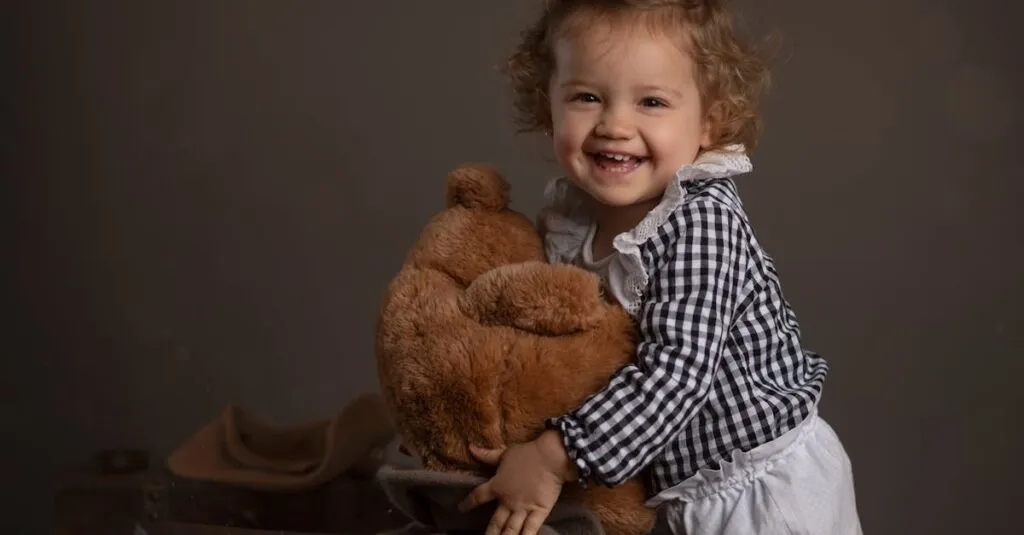Introducing Big Ideas Simply
When it comes to explaining complex ideas like salvation and God’s grace, preschoolers need simplicity. Think about when you try to explain why they can’t have ice cream for breakfast. It’s complicated!
Start with big concepts, use simple words, and mix in fun. For example:
- Salvation: It can be talked about as a special gift we get from God because He loves us so much.
- Grace: Imagine when you spill juice on the carpet, and Mom doesn’t get mad.
As you introduce these ideas, incorporating playful moments and silly faces can keep kids engaged.

Using Everyday Situations
Parents, here’s a tool you’re already familiar with: the teachable moment. These moments pop up everywhere, from playing tag at the park to sharing toys. Use these chances to weave in lessons about grace.
Like when your child shares a cookie, it’s a perfect time to point out how they’re being just like God by giving someone something. Real-life illustrations make abstract ideas, like grace, more digestible. It turns concepts into actions that preschoolers can see and understand, bridging the gap between learning and the living room.

Embracing these moments not only enriches your child’s understanding but also strengthens your bond as you navigate these lessons together.
Storytime: The Power of Stories
Bedtime stories are goldmines for teaching kids. Characters become vessels of lessons. The story of the Good Samaritan, for instance, shows kindness and grace through action.
As you read, ask your child questions like:
- What would you do?
- How did this story make you feel?
This sparks empathy and understanding in little hearts while wrapping concepts in an engaging narrative. Remember, the goal isn’t just storytelling but connecting through stories. This fosters curiosity, and kids learn that grace is not just a word but a deed.

Activities that Bring Grace to Life
Engaging in various activities such as crafting, role-playing, or even a simple game of ‘freeze tag’—where everyone wins—can be a great way to teach about grace. These activities foster an environment of smiles and giggles, and they effectively embed the root of grace: joy in giving and receiving.
Examples of Grace-Focused Activities
- Role-Playing: One child forgiving another with a hug demonstrates grace in action.
- Arts and Crafts: Creating ‘thank you’ cards for each other’s small acts of kindness can reinforce the concept of grace.
Through these activities, kids not only hear about grace but see and feel it in a tangible way.

Handling Emotional Outbursts
Preschoolers are bundles of energy and emotions ready to explode, much like your morning coffee after a slight nudge. When they express anger or frustration, it’s an opportune moment to teach grace.
Encourage them to use their words: ‘I understand you’re upset because you can’t play right now. Let’s think about what we can do instead.’ Teaching children how to manage emotions is not just about containment but also about showing grace to oneself. This process builds patience and understanding, which are vital parts of grace.

Encouraging Questions and Curiosity
‘Why?’ is a favorite question for preschoolers and a wonderful one. When they ask, seize these moments to dive deeper into discussions about grace.
Explain that it’s okay to make mistakes and that these are lessons on how to show grace to others. It’s important to create a safe space where children can ask ‘why’ repeatedly without judgment. This interaction nurtures a child’s curiosity and helps them understand that grace is patient and kind, even if things don’t go as planned.

Encouraging this kind of exploration not only fosters their natural inquisitiveness but also strengthens their understanding of meaningful values such as compassion and forgiveness.
Finding Grace in Everyday Moments
Everyday life is full of small nooks where grace lurks. Encourage your children to look for and recognize it. When they manage to put on their shoes, even when on the wrong feet, celebrate with a hug. This moment is a chance to teach them that trying and failing is also part of grace.
Highlight moments when people show kindness, whether it’s in sharing a snack or letting someone else go first in line. These instances become anchors, helping children understand that grace is woven into daily life.

- Celebrate small successes: A hug for every pair of shoes put on, no matter the order.
- Encourage kindness: Point out acts of sharing and selflessness.
- Teach valuable lessons: Show them that patience and acceptance are part of grace.
